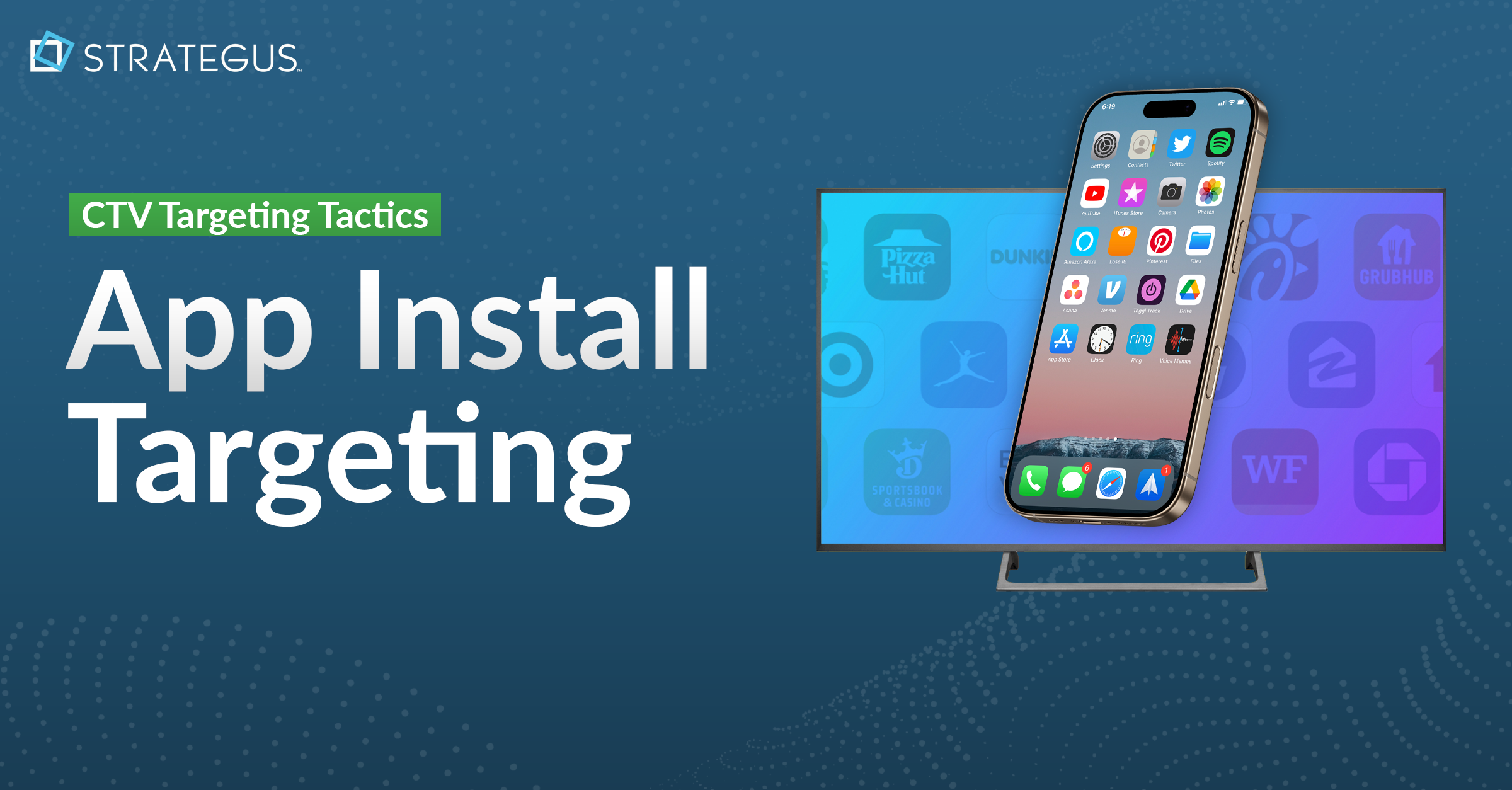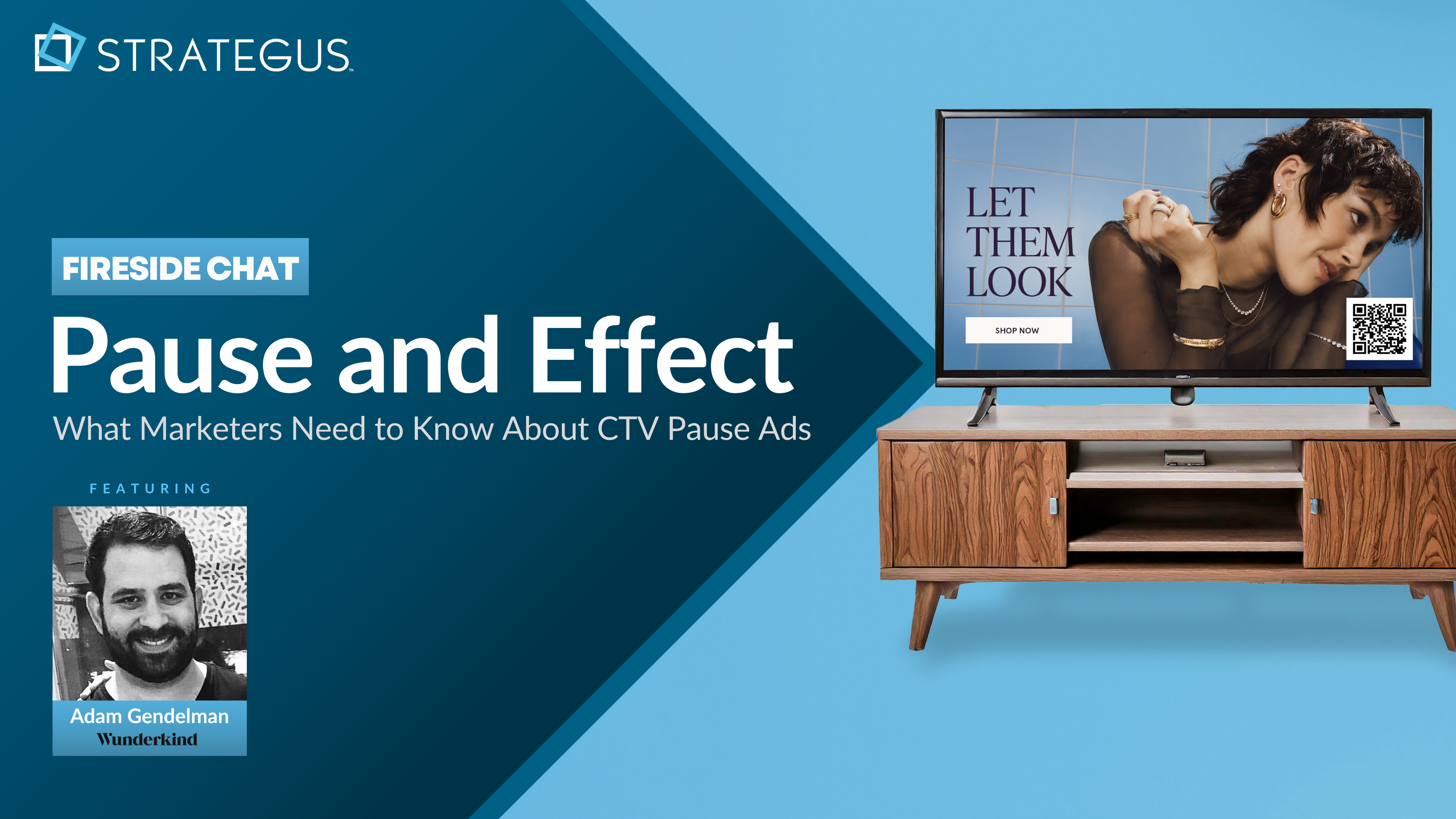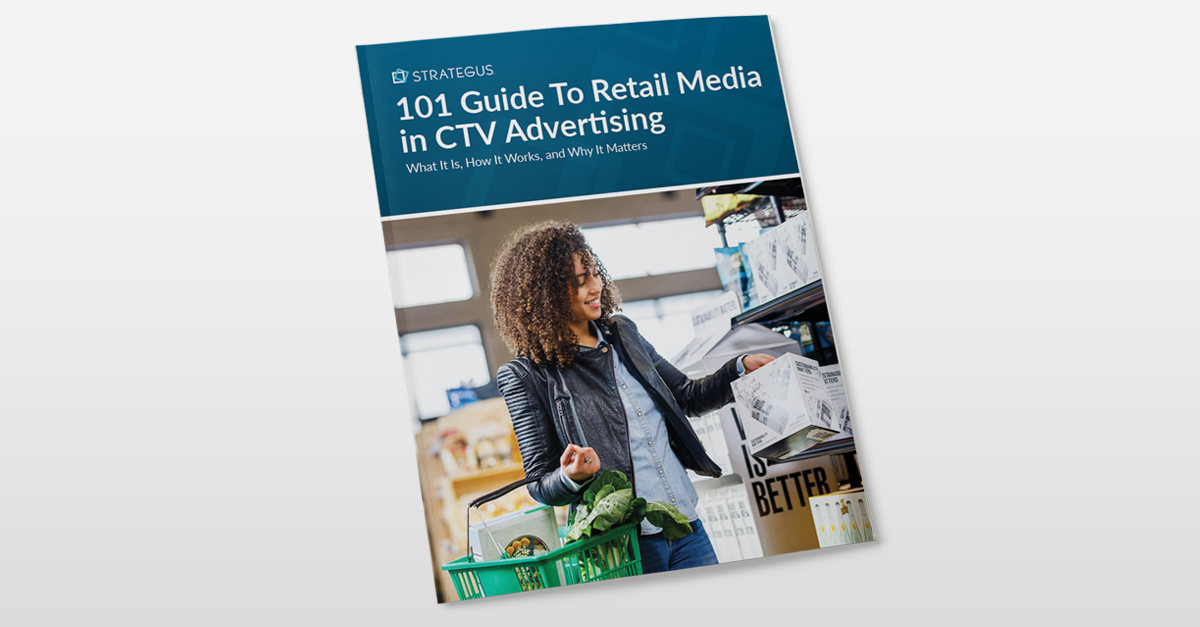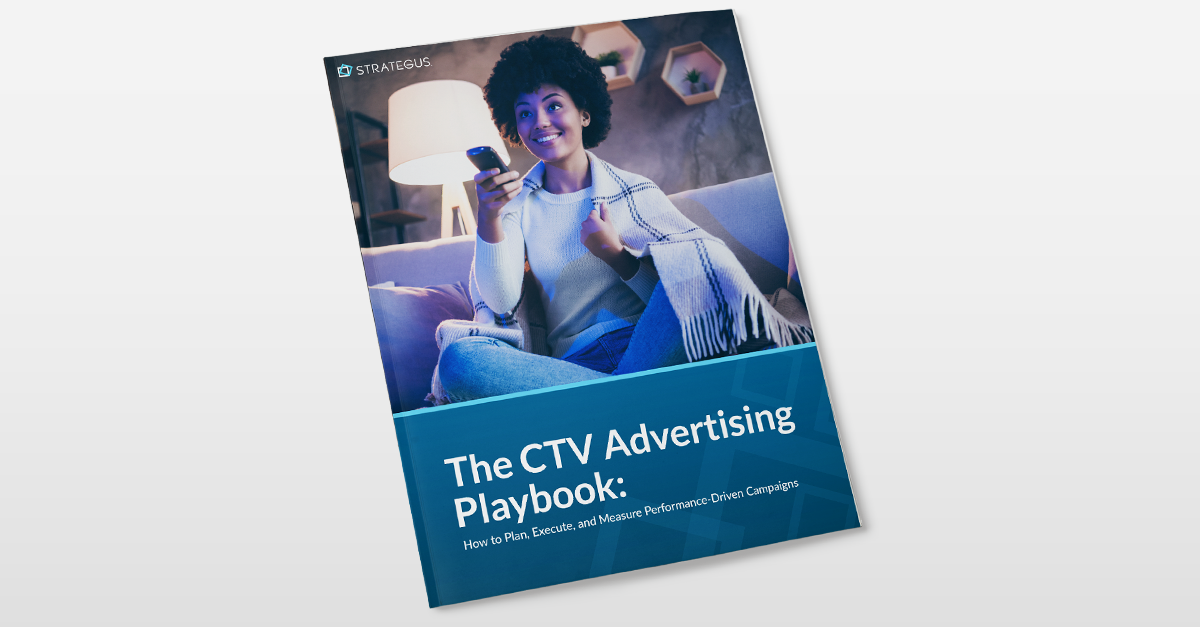- Home
- Strategus Blog
- From First TV Commercial: History of TV Ads & Commercials
From First TV Commercial: History of TV Ads & Commercials
 Traci Ruether
Traci Ruether
11 minutes read

On July 1, 1941, during a Dodgers vs. Phillies game, the world’s first TV commercial aired: a 10-second spot for Bulova Watch Co. costing just $9. That moment launched a multi-billion dollar industry.
From “Wazzup” to Flo from Progressive, TV ads have shaped pop culture and how brands connect with consumers.
Today, with connected TV (CTV) and programmatic advertising, commercials are smarter, sharper, and more targeted than ever.
This article breaks down how it all began, and where it’s going next.
Learn More→ OTT Advertising Trends in 2023
How TV Ads Took Over from Radio
While radio remained the dominant medium through the 1940s, TV's visual storytelling changed the game. Brands could now show rather than just tell.
Early commercials leaned heavily on this novelty—animated logos, live-action demonstrations, and even puppet spokespeople made their way into homes. TV wasn’t just replacing radio; it was building an entirely new emotional connection with consumers.
Why This Still Matters Today
Think about the last ad you saw on TV, or more likely, your favorite streaming app. Whether it was a Super Bowl spot that made you laugh or a skippable ad before a YouTube video, the DNA of that commercial is rooted in the earliest TV ads.
The jingles you hum, the slogans you quote, even the visual style of modern product placements—they all trace back to this evolving medium. From Ronald McDonald to the Geico gecko, these campaigns didn’t just sell products. They shaped culture.
1941-1955: TV Advertising Is Born
By the late 1940s, TVs were no longer rare. In 1947, Americans bought over 40,000 sets, and by 1951, more than 12 million homes had one. Advertisers saw the opportunity. TV wasn’t just a new screen—it was a direct line into living rooms across the country.
In June of 1941, the FCC lifted its ban on TV advertising, and commercials hit the airwaves one month later. The ad for Bulova watches above became the first commercial on television — or at least the first legal one. Any TV advertising tests that aired before weren’t compensated due to regulations.
U.S. advertisers continued experimenting with the medium, and in 1949, Vitamix was featured in the world’s first infomercial. Vitamix founder “Papa” Bernard leveraged his background as a salesman to host a live half-hour product demonstration of his cutting-edge blender. He needed to sell 18 machines to break even on ad costs. In the scope of a single night, he sold 400.
Outside of the U.S., marketers followed suit. A 1953 ad for Seiko watches brought TV advertising to Japan, succeeded by a 1955 Gibbs SR toothpaste advert in the United Kingdom.
With watches, toothpaste, blenders, and more finding success on the small screen, advertisers started expanding their horizons. This period also saw the rise of category-firsts. The first detergent ad aired in 1948, and by the early 1950s, everything from insurance to frozen foods had made its debut. TV was no longer just a novelty—it had become a mass-market channel driving real sales.
What came next was Eisenhower’s 1952 commercial for the presidential race — bringing political advertising into the fold. The “Ike for President” jingle would go on to define Eisenhower’s win in the first U.S. election where TV played a role.
By 1955, television had ousted radio as the primary source of entertainment in U.S. homes. It would also soon replace newspapers as the primary news source, which meant advertisers had no choice but to embrace the new medium.
1956-1988: Commercials Become Engrained in Our Culture
At the end of the 1950s, we entered the Golden Age of Advertising. Agencies began approaching commercials as an art form in their own right and things started to get exciting. The explosion of spending in the industry didn’t hurt either. This is when Mad Men-esque creative complemented popular entertainment like I Love Lucy and The Ed Sullivan Show. Commercials were still novel enough to capture viewers’ attention, and advertisers rose to the occasion.
Even ad formats began evolving. The 60-second spot became the industry standard, offering enough time for brands to build a mini-narrative without losing viewer attention. Meanwhile, advertisers learned to tap into emotion—nostalgia, humor, patriotism—paving the way for enduring brand loyalty.
In 1963, Ronald McDonald got his start in a series of spots that would scare most children today. A decade later, the Oscar Mayer “My Bologna Has a First Name” song debuted, which continued to play in their commercials until 2010.
Other popular jingles, characters, and slogans from commercials during this period include:
- The Pillsbury Doughboy, airing in 1965
- The Tootsie Pop “How Many Licks” campaign, airing in 1968
- Nike’s “Just Do It” campaign, airing in 1988
Some of the most quoted lines in pop culture—“Just Do It,” “I’d like to buy the world a Coke,” or “Where’s the Beef?”—came straight out of commercials. These weren’t just ads. They became part of how people talked, joked, and even saw themselves.
By the 1980s, TV advertising was big business — with ABC, CBS, and NBC earning more than $4 billion in revenue. And so, Apple aired its iconic Macintosh commercial during the 1984 Super Bowl with a $500,000 spot. This is the point at which the annual football game became a major ad event. It’s also the beginning of an era where ads could double as breaking news.
Super Bowl commercials became events of their own. Companies weren’t just selling—they were making statements. Pepsi’s ads in the '80s leaned on pop culture and celebrities, helping spark the "Cola Wars" between Pepsi and Coke. Ads were no longer just part of the program. They were the program.
1989-2006: The World of Online Entertainment and Advertising Comes Alive
Right around the time that the Berlin Wall fell, scientists were transcending global borders in another way entirely. It was in 1989 that the British scientist Tim Berners-Lee invented the World Wide Web.
He intended to streamline information sharing between institutions and universities around the world. The impact that the internet would have on entertainment, advertising, and everyday life wouldn’t be realized for some time — but we all know how things panned out.
Technology moved fast during this period. The first broadcast was streamed online just four years later. A group of Silicon Valley scientists with a garage band called Severe Tire Damage were the architects of this stream, which used up half of the internet’s available bandwidth at the time.
And so, the groundwork was laid for online video broadcasting. But what about online advertising?
At this stage, the lines between TV and the internet were still blurry. Many advertisers were unsure how digital would fit into the traditional media mix. But that uncertainty wouldn't last long.
As broadband speeds improved and platforms like YouTube emerged, it became clear that the next era of commercials would be just as visual—but far more personalized.
In a matter of one year, online advertising arrived in the form of an AT&T banner ad.
YouTube put the two together in 2006 by launching its first ad concept. This was the point at which ad-supported streaming became an industry in its own right.
2007-2014: OTT Services and CTV Devices Are Brought to the Masses
The period from 2007 through 2014 saw a frenzy of activity in over-the-top (OTT) broadcasting and connected television (CTV) innovation. It all started when Netflix pivoted from mailing DVDs to subscribers to streaming content directly \to their living rooms. Internet video had found its place in mass media.
This disrupted the broadcast industry in a number of ways. For one, viewers were no longer shackled to a fixed broadcast schedule. Beyond that, the Netflix subscription-based video-on-demand (SVOD) model left advertisers out of the picture.
Luckily, that didn’t last long. Hulu launched its ad-supported streaming platform the following year. That meant advertisers could still reach viewers watching shows at home, and the CTV advertising industry was born.
Televisions became increasingly smart. LG, HP, Samsung, and Sony all developed connected TV sets, bringing the internet into living rooms. Similarly, Roku released its set-top box, transforming any TV set into a smart, connected device.
2015-2022: CTV Advertising Thrives as Cord-Cutting Becomes the Norm
Strategus pushed TV advertising into a new frontier by delivering the first programmatic CTV ad in 2015. The campaign, which targeted consumers already in the market to buy a car, served ads for an auto agency that still partners with Strategus today.
The beauty of CTV advertising lies in its precision: Rather than broadcasting expensive and irrelevant commercials to countless viewers, programmatic CTV allows businesses to reach likely buyers with sophisticated campaigns.
Take it from our EVP of Innovation & Strategy and Co-founder Joel Cox:
“Programmatic advertising brings new capabilities to more mid-market companies who can now afford more precise targeting, and therefore more accessible budgeting and reach. The opportunities for more advertisers are democratized by new technology. We want to move the market more toward where it should go, where ads are targeted to individuals in the audience, who see ads that are relevant to them, as opposed to the old way, where ads are targeted more toward the content that people are watching. The data-driven approach makes so much more sense as the content is exploding with digital streaming over the internet. Serving relevant ads to the right people at the right time is where the advertising industry has wanted to go for generations.”
Since running the first CTV ad, we’ve watched ad-supported streaming become widespread. Following Hulu’s success with the AVOD model, Netflix and Disney+ both added advertising into their business models last year.
This evolution didn’t just benefit big-budget brands. Mid-market and local advertisers began leveraging CTV’s targeting capabilities, reaching niche audiences with high-intent messaging. For the first time, a local auto dealership could show an ad only to viewers within a 10-mile radius—something linear TV could never do.
Beyond that, free ad-supported TV (FAST) is displacing linear satellite and cable. Top players in the FAST space include Roku, Pluto TV, and Peacock. This combination of streaming and traditional linear broadcasting delivers channels at no cost to cord-cutters.
As a result, streaming has finally surpassed linear cable in viewership. To put this another way: if you aren’t advertising to CTV viewers, you’re missing out on the biggest slice of the pie.
2023 - Present Day
We've traded in our bulky televisions for sleek connected TVs, and swapped generic commercials for targeted programmatic advertising. So what's next? It’s impossible to say.
Will VR change the future of advertising, or has the promise of the metaverse fizzled out? What about AI? Is it going to transform video production as we know it?
Regardless of these unknowns, two things are clear: TV advertising is here to stay and the future of streaming is ad-supported.
New formats are also emerging. Shoppable TV ads—where viewers can scan a QR code or click to buy—are turning passive watching into active purchasing. AI is also beginning to generate ad creatives in real-time, adapting visuals and messaging to match viewer behavior and demographics.
The future of TV advertising will be a blend of storytelling and smart data. Creative will always matter—but so will context. As viewing continues to shift across platforms, screens, and formats, advertisers who balance relevance with originality will be the ones that win.
Find out what else is ahead by reading our blog on OTT Trends in 2024.
Take Your TV Advertising Into the Future
TV ads have evolved, from $9 spots in 1941 to precise, data-driven campaigns on streaming platforms.
Strategus helped lead that shift, launching the first programmatic CTV ad in 2015, and we’ve been innovating ever since.
Why partner with Strategus?
- First-mover in programmatic CTV
- Precision targeting with 200+ data partners
- Real-time reporting and full-funnel attribution
- Cross-device retargeting to boost engagement
- Fully managed campaigns backed by CTV experts
Don’t just run ads. Run smarter campaigns that perform.
Contact Strategus today to get started.
Frequently Asked Questions
What Was the First Commercial?
The first official TV commercial aired on July 1, 1941, during a Dodgers vs. Phillies baseball game. It was a 10-second Bulova watches ad that cost $9. It marked the beginning of the television advertising industry, reaching around 4,000 households.
When Was the First Infomercial Aired?
The first infomercial aired in 1949 when Vitamix founder "Papa" Bernard did a live 30-minute blender demo. The broadcast was a success, selling 400 units and proving long-form advertising could drive direct sales on TV.
What Was the Most Expensive TV Ad Ever?
Apple's "1984" commercial, which aired during the Super Bowl, is among the most expensive. It cost $1.2 million total ($500K for airtime and $700K production). Despite airing only once, it became a cultural landmark and redefined Super Bowl advertising.
How Much Does a 30-Second Super Bowl Ad Cost Now?
As of 2024, a 30-second Super Bowl ad costs between $6.5–7 million. Brands pay this premium for access to one of the most-watched global events, often launching high-budget creative tied into larger cross-platform campaigns.
When Did Infomercials Become Widespread?
While the first aired in 1949, infomercials became mainstream in the 1980s after the FCC relaxed rules around ad formats. The extended format allowed for deeper product demos and storytelling, leading to a boom in direct-response advertising.
Can Small Businesses Afford TV Advertising Today?
Yes. While traditional TV ads are costly, CTV and programmatic ads offer lower-cost, targeted options. Local TV spots may cost a few hundred dollars, and smaller brands can now reach specific audiences without national-scale budgets.
What's the Difference Between Traditional TV and CTV Advertising?
Traditional TV uses broad, scheduled programming and limited targeting. CTV (Connected TV) delivers ads through streaming platforms, allowing precise audience targeting, real-time analytics, and lower entry costs—ideal for modern, data-driven campaigns.
Does the Style of a TV Campaign Matter?
Yes. Style influences effectiveness—humor, nostalgia, emotion, and visuals all impact how viewers connect. A well-styled commercial aligned with your audience can boost recall and engagement, while poor execution wastes your media spend.
How Did Super Bowl Ads Become a Cultural Phenomenon?
It started in 1984 with Apple's Macintosh ad. Since then, brands have used the Super Bowl to debut creative, buzzworthy campaigns. The event became an unofficial advertising showcase, with viewers tuning in as much for the commercials as the game.
What's the Future of TV Advertising?
It's ad-supported and interactive. Shoppable ads, AI-generated creatives, and cross-device targeting are emerging trends. With streaming dominating viewership, future success will depend on relevance + storytelling, not just reach.

Traci Ruether is a content marketing consultant specializing in video tech. With over a decade of experience leading content strategy, she takes a metrics-driven approach to storytelling that drives traffic to her clients' websites. Follow her on LinkedIn at linkedin.com/in/traci-ruether or learn more at traciruether.com.
Strategus is a managed services connected TV(CTV) advertising agency with over 60,000+ campaigns delivered. Find out how our experts can extend your team and drive the result that matter most.
Talk to an Expert
Seeking a Custom CTV Strategy That Delivers?
What to read next
App Event Tracking: Tie Mobile App Activity to CTV Campaigns
Let’s say you’re running a CTV campaign for a personal finance app.
5 minutes read

Stop Guessing Who Your Audience Is — Let Their Apps Tell You
Connected TV (CTV) targeting often falls in one of two camps.
8 minutes read
See Who Bought After Your Ad + How Much They Spent
You can’t improve what you can’t measure. And for years, that’s been a major problem with TV advertising.
4 minutes read

First-Party Attribution: Match Ads to Sales With CRM Data
The value of first-party data continues to grow.
7 minutes read













